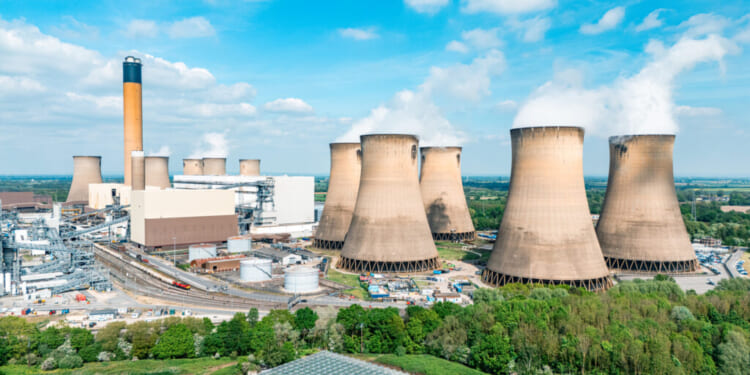Recent activities by Ukraine against Russian refineries and the incident at the Chevron Refinery in California are exposing the vulnerability of major Goliath infrastructures being stationary targets for slaying by the Davids in the world.
The misunderstanding of “green” delusionists is treating electricity as interchangeable with materials, as it is the central flaw of the green movement. Electricity is a utility, not a substance.
Electricity drives processes, but those wind turbines and solar panels cannot themselves make things. Even basic metals like iron and copper require carbon as a reducing agent during smelting. Without carbon, humanity would lose the very means of transforming minerals into usable materials.
Meanwhile, governments pour trillions of dollars into policies designed to eliminate fossil fuels, without considering the economic or physical realities that wind and solar do totally different things than crude oil processed through refineries.
Yes Virginia, electricity can charge our iPhones, light our cities, and power our computers, but electricity cannot create the raw materials needed to build those very machines.
In fact, steel, cement, plastics, fertilizers, and pharmaceuticals all require hydrocarbons—not simply as fuel but as essential feedstocks. Oil, natural gas, and coal are the molecular foundations for over 6,000 everyday products that define modern life. Without them, hospitals would lack sterile equipment, farmers would lose fertilizers, and the construction of roads, bridges, and homes would grind to a halt.
The same contradiction appears globally. Electric vehicles are celebrated as zero-emission solutions, yet their manufacture depends heavily on fossil fuels—from the mining of lithium and cobalt with diesel-powered equipment to the production of tires, insulation, electronics, steel, glass, and plastic components derived from hydrocarbons. The result is more ways to use fossil fuels, which is a carbon shift, not a carbon elimination.
Government-mandated winners and losers are only applicable to those few in the wealthier countries that can afford huge subsidies, but the reality is that there are no silver bullet answers.
For those outside the few wealthy countries, we see that at least 80 percent of humanity, or more than six billion in this world, are living on less than $10 a day, and billions are living with little to no access to electricity
The zero-emission movement is a delusion that JUST electricity generated from wind and solar can replace refineries and the crude oil that they process to support the variety of more than 6,000 products and fuels in our materialistic society that did not exist 200 years ago.
As of January 1, 2025, there were 131 operable refineries in the United States according to the U.S. Energy Information Administration (EIA)‘s data. This total includes traditional refineries and some facilities that produce petroleum product blending components but lack atmospheric distillation capacity.
Over the years, the reduction in the number of operating refineries stems from aging infrastructure, high maintenance costs, and environmental regulations that have made smaller or less efficient plants uneconomical. Utilization rates have hovered between 85-93% annually, with 2024 seeing an average of 88%, indicating spare capacity but also highlighting vulnerabilities during peak demand or disruptions.
The number of operable refineries has large capacities and are aging, and thus have generally declined over the past few decades. The majority of refineries are concentrated along the Gulf Coast, particularly in states like Texas (47), Louisiana (19), and California (18).
Building new refineries is challenging due to high costs, large land footprints that easily exceed 1,000 acres, environmental concerns, and political opposition, especially as the nation focuses its mandates and subsidies toward the generation of JUST electricity from wind turbines and solar panels. Yet wind turbines and solar panels CANNOT support the supply chain of products to build anything, even to build more wind and solar!
Government policies are difficult to reverse. Onshore and offshore wind have been tied to three goals at once: decarbonization, electricity security, and industrial revitalization. Billions in subsidies through “green” funds are already committed, while local governments and industries expect contracts and jobs from these subsidized funds.
In effect, offshore wind has become a new type of public works project. Ports, construction companies, heavy industry, and trading houses all benefit from the government mandates to build more electricity generation from wind and solar, and the government’s financial support to build them. For politicians, it delivers regional development; for bureaucrats, it provides visible progress. Under these conditions, the withdrawal of corporate America investments is treated as a temporary setback and prompts no policy review.
Ukraine, the David trying to slay Goliath Russia, has been demonstrating via drone attacks at the heart of Russia’s military and economy, by attacking Russian refineries that provide the fuel for their Goliath empire.
By chance, in October 2025, the Chevron refinery in Southern California had an apparent leak that ignited and temporarily ceased production of 40% of the jet fuel demanded in Southern California. The Ukrainian drone attacks on Russian refineries and the Chevron incident are strong messages to America’s national security team that Goliath infrastructures are easy targets for “David.”
First Published at AmericaOutLoudNews.Org

















